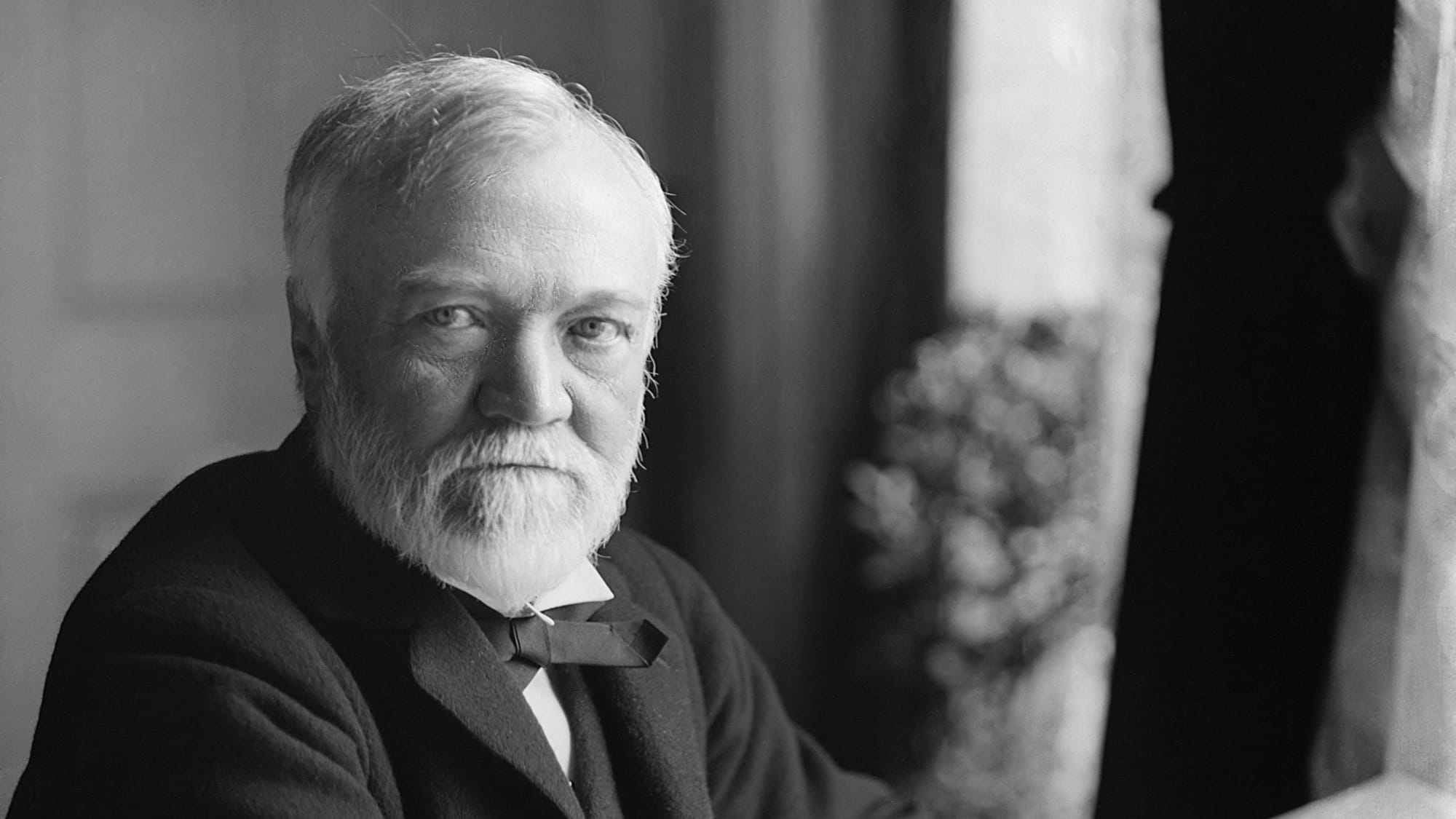The Industrialist’s Call to Action: Andrew Carnegie’s Gospel of Wealth
Imagine a world where the super-rich don’t just hoard their wealth but actively use it to uplift society. This was the radical vision Andrew Carnegie, the steel magnate, laid out in his renowned 1889 essay, “The Gospel of Wealth.” This powerful call to action challenged the wealthy elite to leverage their fortunes for the greater good, arguing that with immense wealth came an even greater responsibility.
Carnegie’s vision extended beyond arbitrary charitable donations. He championed strategic philanthropy, urging the wealthy to invest thoughtfully in initiatives that fostered lasting positive change. Libraries, universities, and cultural institutions were among his preferred areas of investment, believing them to be catalysts for individual growth and societal advancement.
Carnegie’s Philanthropic Legacy: Actions Speak Louder Than Words
Andrew Carnegie, the steel tycoon who amassed a vast fortune during the Industrial Revolution, distinguished himself through his commitment to philanthropy. A firm believer in the “Gospel of Wealth,” he posited that the wealthy bore a moral obligation to utilize their excess riches for the betterment of society. Carnegie practiced what he preached, dedicating a significant portion of his wealth to initiatives focused on education, access to information, and the promotion of peace.
Recognizing education as the cornerstone of individual and societal progress, Carnegie fervently supported the construction of libraries. He financed the establishment of over 2,500 public libraries worldwide, democratizing access to knowledge and empowering individuals from all walks of life. His commitment to education extended beyond libraries to encompass the founding of universities and the provision of financial aid, enabling underprivileged students to pursue higher education. Carnegie’s legacy extends to renowned institutions such as Carnegie Mellon University, a testament to his enduring belief in the transformative power of education.
Carnegie’s philanthropic endeavors were not limited to education. He was a staunch advocate for international peace and invested in organizations dedicated to conflict resolution, believing that global stability was paramount to progress. His contributions to the arts, evidenced by iconic venues like Carnegie Hall, underscore his belief in the power of the arts to inspire and elevate the human spirit.
A hallmark of Carnegie’s philanthropy was its strategic and long-term approach. Recognizing the limitations of short-term solutions, he invested in projects designed to generate enduring impact. When funding library construction, Carnegie often mandated matching contributions from the communities he sought to assist, ensuring their commitment to the project’s sustainability. This approach fostered a sense of ownership and empowered communities to become active participants in their own advancement.
Carnegie’s example resonated widely, inspiring other affluent individuals and shaping the landscape of modern philanthropy. His actions helped establish the principle that those endowed with great wealth shoulder a responsibility to contribute to the betterment of society, a concept that continues to influence charitable giving today.
The Complexity of Legacy: Did Carnegie Live Up to His Own Gospel?
While Carnegie’s philanthropic endeavors were undeniably substantial, providing access to education and knowledge for countless individuals, his legacy remains a subject of ongoing debate. The stark contrast between his vision of social responsibility and the harsh working conditions prevalent in his steel mills raises questions about the depth of his commitment to alleviating social inequalities.
The Homestead Steel Strike of 1892, a stark illustration of the laborer struggles within Carnegie’s factories, stands in stark contrast to his image as a benevolent benefactor. The event exposed the harsh realities of long hours, hazardous conditions, and meager wages endured by his workforce, prompting criticisms that his philanthropy served as a superficial remedy for systemic issues exacerbated by his own business practices.
Furthermore, Carnegie’s approach to giving, though rooted in noble intentions, has been characterized by some as paternalistic. His tendency to dictate the allocation of resources based on his own vision, rather than actively engaging with and understanding the specific needs of the communities he sought to assist, has drawn criticism. This approach, critics argue, reinforced existing power imbalances rather than authentically empowering marginalized communities.
Adding another layer of complexity, historical scrutiny of Carnegie’s wealth accumulation suggests that some of his business practices, while perhaps considered acceptable during his time, might be deemed ethically questionable by today’s standards. Though the extent to which these practices contributed to his fortune remains a point of contention, it undeniably adds another dimension to the ongoing discourse surrounding his legacy.
Ultimately, the question of whether Andrew Carnegie genuinely lived up to his own “Gospel of Wealth” remains a complex and multifaceted one without a simple answer. His significant contributions to education, libraries, and peace initiatives cannot be understated. Yet, his business practices and the arguably paternalistic nature of his philanthropy continue to spark debate about his true commitment to social justice. The passage of time often provides greater clarity when evaluating historical figures, and it is probable that future generations will continue to wrestle with the contradictions and complexities embedded within Andrew Carnegie’s legacy.
| Aspect | Positive | Negative |
|---|---|---|
| Philanthropy | Extensive, particularly in libraries and education | Arguably did not address systemic inequalities sufficiently |
| Business Practices | Created jobs and contributed to industrial growth | Harsh working conditions and low wages for employees |
| Approach to Giving | Focused on impactful areas like education | Potentially paternalistic, not always community-driven |
Deconstructing the “Gospel”: Understanding Carnegie’s Philosophy
To fully grasp the complexities of Carnegie’s legacy, it’s crucial to delve into the core tenets of his “Gospel of Wealth.” Published in 1889, this influential essay transcended the realm of traditional philanthropy, outlining a philosophical framework for the responsibilities of the nouveau riche in an era grappling with the ramifications of rapid industrialization.
At its heart, the “Gospel of Wealth” posited that the accumulation of wealth was a natural consequence of capitalism, a system Carnegie staunchly defended. He believed that the “law of competition,” though seemingly ruthless, ultimately fueled innovation and propelled society forward. However, this inherent inequality, in Carnegie’s view, wasn’t a justification for unchecked accumulation. Instead, he argued it came with a moral imperative. The wealthy, he declared, had a duty to act as stewards of their fortunes, utilizing their surplus not for personal indulgence but for the betterment of humankind.
Carnegie advocated against the hoarding of wealth and instead implored his peers to embrace a more active form of philanthropy. He urged them to systematically invest in areas that fostered self-improvement and societal progress. Libraries, universities, and cultural institutions, in his view, were not mere charitable endeavors but rather strategic investments in a more enlightened and equitable future. He believed in providing “ladders upon which the aspiring can rise,” empowering individuals to elevate themselves and contribute to the collective good.
However, “The Gospel of Wealth” wasn’t without its critics. Detractors, both then and now, argue that Carnegie’s philosophy inadvertently served to justify the immense wealth disparities of the Gilded Age. They contend that his focus on individual responsibility, while valuable, failed to fully address the systemic issues trapping individuals in a cycle of poverty. Others questioned the inherent power dynamics of philanthropy, suggesting that even with benevolent intentions, the wealthy were ill-equipped to dictate the needs of the less fortunate. This debate over the role of wealth, power, and social responsibility continues to resonate in contemporary society as we grapple with similar issues of economic inequality.
Despite these criticisms, the impact of Carnegie’s “Gospel of Wealth” on the trajectory of philanthropy in the United States is undeniable. His ideas, interwoven with a complex blend of Social Darwinism, individual initiative, and a firm belief in the power of education, spurred a wave of charitable giving from his wealthy contemporaries. From the establishment of countless libraries and educational institutions to the funding of scientific research and peace initiatives, Carnegie’s influence can be felt in the DNA of modern philanthropy. His emphasis on strategic giving, impact measurement, and a focus on long-term solutions continues to shape the way we think about philanthropy today.
Andrew Carnegie’s “Gospel of Wealth”: Navigating a Legacy of Contradictions
The story of Andrew Carnegie and his “Gospel of Wealth” is not one of easy answers or clear-cut judgments. It is a story deeply intertwined with the complexities of his time, a period of unprecedented industrial growth, stark social inequalities, and evolving ideas about wealth, responsibility, and the very nature of a just society.
Carnegie’s legacy is a tapestry woven from both profound contributions and inherent contradictions. He was a man who rose from humble beginnings to become a titan of industry, a ruthless businessman who ultimately dedicated a significant portion of his fortune to empowering others through education and access to knowledge. His “Gospel of Wealth”, while flawed and subject to valid criticisms, ignited a conversation about social responsibility that continues to this day.
As we delve into the intricacies of his life and work, it becomes evident that understanding Andrew Carnegie requires more than simply labeling him as a hero or a villain. His story serves as a potent reminder that history is rarely black and white, and that even the most influential figures often embody a complex interplay of motivations, contradictions, and unintended consequences. As we continue to grapple with issues of wealth inequality, social responsibility, and the role of philanthropy in shaping a more just and equitable world, the legacy of Andrew Carnegie and his “Gospel of Wealth” will likely continue to spark debate and inspire critical reflection for generations to come.
Learn more about the bourbon triumvirate, where you can find the most influential personalities in Kentucky bourbon who played a prominent role in shaping the industry’s trajectory.
- Jerry McSorley’s Post-Divorce Life: New Beginnings - July 16, 2025
- The Rise and Fall of the New Haven Nighthawks: A Minor League Hockey Legacy - July 16, 2025
- Unlock Jerry McSorley’s Career Highlights: Eye Tax Inc.’s Solar Success - July 16, 2025

















1 thought on “Andrew Carnegie’s Gospel of Wealth: A Legacy of Philanthropy and Its Impact”
Comments are closed.